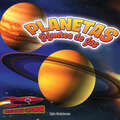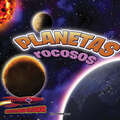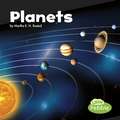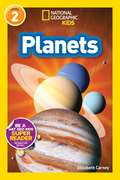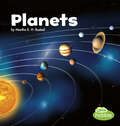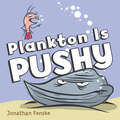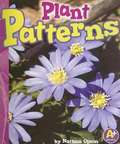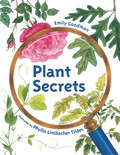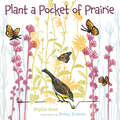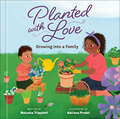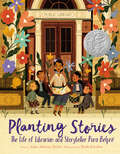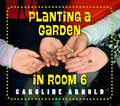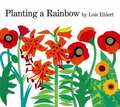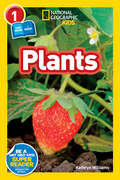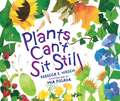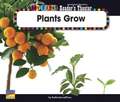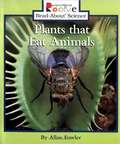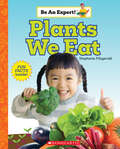- Table View
- List View
Planetas gigantes de gas: Giant Gas Planets: Jupiter, Saturn, Uranus, and Neptune (Inside Outer Space)
by Kyla SteinkrausThe four planets farthest from the Sun are called the gas giants. Jupiter, Saturn, Uranus, and Neptune are different from the other planets in our solar system. They are not solid, but are made of liquids and clouds of gas with gravity pulling it all together into a planet shape. Learn facts about the climate, gases, size, and other quirky things each of the planets possess. This book isn’t filled with hot air! Pull out your telescope and see if you can observe one of these planets. This book will allow students to understand that patterns in the natural world can be observed, used to describe phenomena, and used as evidence.
Planetas rocosos: Rocky Planets: Mercury, Venus, Earth, and Mars (Inside Outer Space)
by Kyla SteinkrausOur solar system is made up of the millions of objects in the sky above us, including the Sun, moon, stars, and planets. This book examines the four planets closest to the Sun, known as the rocky planets. All four planets, Mercury, Venus, Earth, and Mars are described with information about their atmosphere, landscape, orbits, and Fun Facts that give additional information about each of these rocky planets! This book will allow students to use observations of the Sun, moon, and stars to describe patterns that can be predicted.
Planets
by Martha E. H. RustadDiscover the most important facts about the planets. Simple text and out-of-this-world photographs unlock an early reader’s love of science and learning.
Planets (National Geographic Kids Readers #Level 2)
by Elizabeth Carney Laura MarshThis brilliantly illustrated book taps into children's natural curiosity about the vast world of space. This level two reader, written in simple language that is easy for young readers to understand, introduces children to our solar system, including all of the planets and dwarf planets, and lots of fascinating fun facts. <P><P>This reader helps cultivate the explorers of tomorrow! This high-interest, educationally vetted series of beginning readers features the magnificent images of National Geographic, accompanied by texts written by experienced, skilled children's book authors. The inside back cover of the paperback edition is an interactive feature based upon the book. <P><P> Level 1 books reinforce the content of the book with a kinesthetic learning activity. In Level 2 books readers complete a Cloze letter, or fun fill-in, with vocabulary words.
Planets (Space Ser.)
by Martha E. H. RustadSimple text and full-color photographs describe the planets.
Plankton is Pushy
by Jonathan FenskeKids will love getting to know Plankton and Mussel in this laugh-out-loud, under-the-sea picture book!In this funny, underwater picture book, Plankton says hello to Mussel, but Mussel doesn't say anything back. Plankton tries everything to get quiet Mussel to talk. In fact, Plankton gets VERY pushy about it! Will Mussel ever open his mouth? Kids will relate to Plankton's frustration with Mussel, and they will be anxious to see what happens when Mussel finally does open his mouth... Geisel Award Honoree Jonathan Fenske delivers a laugh-out-loud ocean story, and this is the perfect follow-up to Barnacle is Bored.
Plant Patterns (Finding Patterns Ser.)
by Nathan OlsonSimple text introduce different kinds of plant patterns.
Plant Secrets
by Emily GoodmanYoung scientists will love this nature mystery that reveals the secrets hiding in seeds, plants, flowers, and fruits throughout the life cycle of various flora. Curiosity will bloom in this introduction to botany and primary nature science. Plants come in all shapes and sizes, but they go through the same stages as they grow. Using four common plants, young readers learn about plant structure and life cycle. Simple text and colorful, detailed illustrations show the major phases of plant growth with each stage holding a &“secret&” for curious readers to guess. Back matter offers more information on each plant, as well as greater detail on each stage of growth.
Plant a Kiss
by Amy Krouse RosenthalFrom the beloved New York Times bestselling author of Dear Girl, Amy Krouse Rosenthal, a simple and timeless celebration of the power of love.Little Miss planted a kiss...One small act of love blooms into something bigger and more dazzling than Little Miss could have ever imagined in this epic journey about life, kindness, and giving.Amy Krouse Rosenthal and Peter H. Reynolds team together to share a message of hope and to remind us all of the joys to be gained from being open and unselfish.Plant a Kiss works to spark the imagination of the youngest readers, but it will also resonate with anyone, such as a new graduate, who responds to the power of planting a kiss.
Plant a Pocket of Prairie
by Phyllis RootAuthor Phyllis Root and illustrator Betsy Bowen last explored the vast, boggy peatlands of northern Minnesota in their book Big Belching Bog. Now, in Plant a Pocket of Prairie, Root and Bowen take young readers on a trip to another of Minnesota&’s important ecosystems: the prairie. Once covering almost 40 percent of the United States, native prairie is today one of the most endangered ecosystems in the world. Plant a Pocket of Prairie teaches children how changes in one part of the system affect every other part: when prairie plants are destroyed, the animals who eat those plants and live on or around them are harmed as well. Root shows what happens when we work to restore the prairies, encouraging readers to &“plant a pocket of prairie&” in their own backyards. By growing native prairie plants, children can help re-create food and habitat for the many birds, butterflies, and other animals that depend on them. &“Plant cup plants,&” Root suggests. &“A thirsty chickadee might come to drink from a tiny leaf pool. Plant goldenrod. A Great Plains toad might flick its tongue at goldenrod soldier beetles.&” An easy explanation of the history of the prairie, its endangered status, and how to go about growing prairie plants follows, as well as brief descriptions of all the plants and animals mentioned in the story. With Betsy Bowen&’s beautiful, airy illustrations capturing the feel of an open prairie and all its inhabitants, readers of all ages will be inspired to start planting seeds and watching for the many fascinating animals their plants attract. What a marvelous transformation could take place if we all planted a pocket of prairie!
Plantar semillas: Celebrar la primavera (¡Arriba la Lectura!, Big Book Unit 1 #8)
by Kathryn ClayNIMAC-sourced textbook
Planted with Love: Growing into a Family
by Natasha TripplettA heartfelt picture book about one child's experience in foster care that reminds all kids that—just like a garden—love from the right source will help them bloom.Lamar has lived in seven homes in three years and has never stayed anywhere long enough to put down roots. As he watches his new foster mom tend to her garden each day, he soon joins her with cautious curiosity. Together, they plant, they weed, they water . . . until one day Lamar's anger and feelings of uncertainty lead him to destroy the garden.But through his foster mother's love and care, Lamar discovers that just like her garden, he is wanted, he is loved, he has been planted, and he will bloom.Written by a licensed social worker, Planted with Love illustrates that a loving home and a loving adult can provide a safe place for any child to grow and thrive.
Planting Stories: The Life of Librarian and Storyteller Pura Belpré
by Anika Aldamuy DeniseRECIPIENT OF THE PURA BELPRÉ HONOR * A Today Show's Best Kids' Books of 2019 * Indie Next List Pick * Junior Library Guild Selection * “An appealing tribute and successful remedy to the lack of titles about the groundbreaking librarian...a must-have for all libraries.” —School Library Journal (starred review)An inspiring picture book biography of storyteller, puppeteer, and New York City’s first Puerto Rican librarian, who championed bilingual literature.When she came to America in 1921, Pura Belpré carried the cuentos folklóricos of her Puerto Rican homeland. Finding a new home at the New York Public Library as a bilingual assistant, she turned her popular retellings into libros and spread story seeds across the land. Today, these seeds have grown into a lush landscape as generations of children and storytellers continue to share her tales and celebrate Pura’s legacy.Brought to colorful life by Paola Escobar’s elegant and exuberant illustrations and Anika Aldamuy Denise’s lyrical text, this gorgeous book is perfect for the pioneers in your life.Informative backmatter and suggested further reading included.A Spanish-language edition, Sembrando historias: Pura Belpré: bibliotecaria y narradora de cuentos, is also available.“Anika Aldamuy Denise’s intimate telling captures the magical, folk-tale feeling of Belpré’s own stories. Her lyrical text, sprinkled like fairy dust with Spanish words, begs to be read aloud, while Paola Escobar’s stylishly detailed and warmly expressive illustrations capture the joy of sharing stories.” —New York Times Book Review
Planting a Garden in Room 6: From Seeds to Salad (Life Cycles in Room 6)
by Caroline ArnoldKindergarteners learn the joys of gardening in this close-up look at how plants grow.A visit to Mrs. Best's classroom is always inspiring! Follow a classroom of real kindergartners as they grow a garden full of healthy vegetables. Joyful photographs show kids planting seeds, tending the seedlings, and harvesting (and eating!) the results. An exciting introduction to the math and science involved in growing a garden. The Life Cycles in Room 6 series follows Mrs. Best&’s real kindergarten class as they help things grow. This photo-illustrated series engages readers with hands-on science in the classroom and beyond.
Planting a Rainbow (Fountas & Pinnell LLI Blue #Level F)
by Lois EhlertA mother and child plant a rainbow of flowers in the family garden.
Plants (Readers)
by Kathryn WilliamsAdult and child readers will learn all about plants together in this new Co-reader from National Geographic Kids. Find out how plants grow as well as the different parts of plants, seeds, and flowers.
Plants Can't Sit Still
by Mia Posada Rebecca E. HirschDo plants really move? Absolutely! You might be surprised by all ways plants can move. Plants might not pick up their roots and walk away, but they definitely don't sit still! Discover the many ways plants (and their seeds) move. Whether it's a sunflower, a Venus flytrap, or an exotic plant like an exploding cucumber, this fascinating picture book shows just how excitingly active plants really are.
Plants Everywhere (Fountas & Pinnell Classroom, Guided Reading Kindergarten)
by Madeline HydeNIMAC-sourced textbook
Plants Feed Me (Into Reading Texas, Read Aloud Module 8 #1)
by Lizzy RockwellNIMAC-sourced textbook
Plants That Eat Animals (Rookie Read-about Science: Plants And Fungi)
by Allan FowlerNIMAC-sourced textbook <P><P>Discover a variety of carnivorous plants, including the Venus fly trap, sundew, pitcher plant, and bladderwort.<P><P> The natural world comes alive for young readers (Ages 6-7) with Rookie Read-About "RM" Science! With striking, full-color photos and just the right amount of text, this series immediately involves young readers as they discover intriguing facts about the fascinating world around them.
Plants We Eat (Be an Expert!)
by Stephanie FitzgeraldKids love to be the experts! Now they can feel like real pros with this exciting nonfiction series for beginning readers. Kids will be hooked on the thrilling real-world topics and big, bright photos. Each book features simple sentences and sight words that children can practice reading. Then, with support, kids can dig deeper into the extra facts, Q&As, and fun challenges.Fans of this series will be eager to become real experts!Sometimes we eat the leaves of a plant. Sometimes we eat the roots. These foods from plants are all good for us! What do you know about the fruits and vegetables that come from plants? With this book you can become an expert!
Plants on the Move
by Émilie VastA gorgeous, lyrical exploration of how seeds travel from plant to plant, take root, and grow. When you think of a plant, you don't think of how it moves. But the feathery seeds of the dandelion fly to other gardens, strawberry tendrils creep, and maple seeds spin. There are many different ways plants move, not only as they grow, but in their quest to reproduce: falling, clinging, floating, burrowing--even exploding!Fourteen plant journeys are chronicled, but more than sixty species are highlighed in Émilie Vast's fantastic and unique art style. Learn the scientific names for the different ways plants move.
